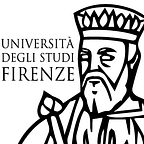Making the Difference: John Dewey and the Naturalization of Aesthetics
From Firenze University Press Journal: Aisthesis
Jean-Pierre Cometti
«Aesthetic Mind» is a nice slogan, but what does it mean exactly? If it amounts to assume the idea of a brain encapsulating along with its usual functions and potentialities, the type of qualities involved in what we consider as specific in aesthetic actions and reactions, then the « aesthetic mind » shall appear as an extension — and may be an enrichment — of the inspiration running through philosophy of mind and cognitive sciences since about half a century.
But does not it mean also that aesthetic experience finds in brain its causal determinations, and therefore belongs to the various ways of acting and reacting characteristic of our mental hardware or structure, its laws and potentialities? Such an assertion can be interpreted in different ways, depending on what it aims more precisely. Is it a question of highlighting and explaining the human brain’s resources on the basis of its laws and organic potentialities or to conceive it as connected to a computational model coming from the developments of artificial intelligence(Dennett [2005])?
The naturalization of aesthetics finds in such models some of its main motives, contrasting with the philosophical concerns aiming to subtract aesthetics from the models coming from natural sciences and their way of proceeding.
Of course, there is not only one way of naturalization. Without questioning specifically the evolutionist theories or the naturalization of intentionality, we must observe that there are at least two versions which can be taken as significant for our concern : one is based on a model of mind involving a lot of capacities explaining special behaviours characteristic of human beings (taken as universal), while the other (on a more relativistic way) ascribes much more importance to culture and social interactions in a similar way Dewey suggested when he wrote: «the way whose philosophy relate to physics and biology is not a direct one; it depends on social sciences». It does not mean that special behaviours or reactions like aesthetic ones do not depend at all on physical or material processes, but it assumes that what they mean (for us) is not understandable independently of what is rooted and develops in society. These two conceptions are both consistent with a naturalized approach. The second (Deweyian) is based on a Darwinian continuity leading to other paths than the traditional ways used in philosophy, and able to escape the main misunderstandings connected with aesthetics. It concentrates into two lines of thought (explained at length in Experience and Nature and in Art as Experience:
- It tends to clear away the mystery that surrounds art by relating it to conditions and presuppositions inherited from history and depending on its place in various historical and cultural contexts;
- It tries to restore and to better understand the continuity of art with other fields of the human experience.
The main outcomes of this story are both critical and theoretical. It opens on aesthetic investigations taking rid of the main misunderstandings incorporated in it, and it gives opportunity for evaluating what these new approaches in cognition have to pay to such misunderstandings. It advocates for a position that refers back to back what we could call the «recalcitrant» theories, and the «conquering» cognitivism.
Read Full Text: https://oajournals.fupress.net/index.php/aisthesis/article/view/863
